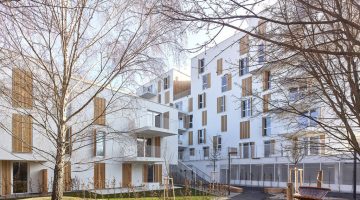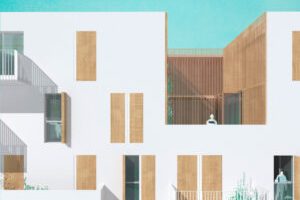



Europan – Wien, Austria
Main objectives of the project
Date
- 2022: Construction
Stakeholders
- Architect: Arenas Basabe Palacios arquitectos
Location
City: Vienna
Country/Region: Austria, Vienna
Description
Arenas Basabe Palacios was runner-up with their project Urban Software to E12 competition. Their project proposed a strategy prioritising the process over the final result, based on the generation of a flexible support able to react to the various scales and context conditions. This award allowed them to take part in the design of the Siemensäcker urban planning for a new 8 hectares residential neighbourhood in the north of Vienna. This urban project was developed through a collaborative process with a dozen or so offices of experts in urbanism, architecture, landscape, mobility, energy,etc.
Once the masterplan was passed in December 2016, the owner of the land (Austrian Real State) commissioned us with the design of 65 housing units, distributed in three blocks of different dimensions (sizes S, M, L).
The project takes advantage of the different building scales and free spaces foreseen in the planning to connect itself to the diverse urban fabrics that surround it and to adapt to the topography and landscape. The scale of the buildings is attenuated thanks to the volumes that project outwards from the façade, which also stablish specific relationships with the surrounding elements, spaces and axes. In parallel to the design of the architecture, we are still involved in the ‘Qualitätenkatalog’- the group of experts that collectively define the qualities of the free space, the landscape, the common parking space and the management of the non-residential uses of the neighbourhood. In this manner, individual decisions are made based on collective work, and vice versa: it is thus a design process that unifies the disciplines of the architecture and urbanism, establishing guidelines at building and neighbourhood scales simultaneously.
Each housing unit is organized around a nucleus of furniture, which integrates within every storage, installation and serving unit. Thanks to this, all living spaces are connected to the exterior, reserving for the ‘day area’ (kitchen-sitting room-dinning room) the area wich will enjoy, due to its two orientations, the most daylight hours.
